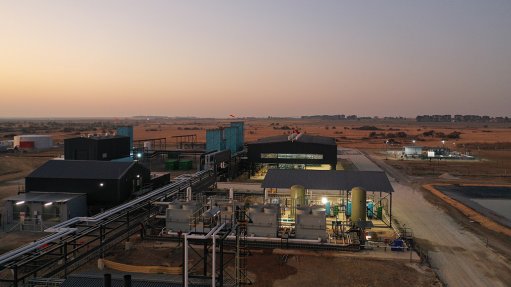African glaciers’ twilight years
Africa continues to bear the brunt of climate change, despite being responsible for a measly 4% of the world’s greenhouse-gas emissions. Now we are told its remaining glaciers on three mountain tops – all in East Africa – will be gone by 2050. That’s a mere 28 years from now.
The three glacier-capped mountains are Tanzania’s Mount Kilimanjaro, Uganda’s Rwenzori Mountains and Mount Kenya.
Mount Kilimanjaro needs very little introduction, as it were, being the highest in Africa and the fourth highest in the world, at 5 895 m above sea level. Every year, more than 20 000 people attempt to climb it, with a typical ascent taking five to nine days, depending on the number of hours covered each day. Thus, Mount Kilimanjaro, which has been a World Heritage Site (WHS) since 1987, together with the Mount Kilimanjaro National Park, is a significant tourist attraction and revenue earner for the East African country’s economy.
The snow-capped peaks of the Rwenzori Mountains, in western Uganda, which rise to a height of 5 109 m above sea level and lie on the border with the Democratic Republic of Congo, have been a WHS since 1994. The mountain range is one of the largest and most significant water catchment areas in Uganda, and the rivers running from it feed the economically important lakes – Edward and George – and are a major source of the White Nile. Their mist-shrouded peaks provide a picturesque backdrop to the magnificent Rwenzori Mountains National Park.
Like Mount Kilimanjaro and the Rwenzori Mountains, Mount Kenya, which lies within the Mount Kenya National Park and stands at an elevation of 5 199 m above sea level, is a tourist attraction of note and a WHS too, a status it has enjoyed since 1997.
Mount Kenya has also been popularised in the works of some of the country’s renowned writers. Ngugi wa Thiong’o refers to it in his novels, Weep Not, Child and The River Between, as Kirinyaga, or ‘He who shines in holiness’ in Kikuyu, his native language. Independence struggle hero Jomo Kenyatta, also a Kikuyu, titled his 1938 anthropological study of his ethnic kindred Facing Mount Kenya. Kenyatta would become Kenya’s first post-independence leader in 1963 and Uhuru, one of his sons, was President for two consecutive terms from 2012 to 2022.
But I digress. In a report released last month, the United Nations says the glaciers on the three mountains will vanish in less than three decades as climate change intensifies, as will some glaciers elsewhere, including in the Alps and the Yosemite National Park, in the US. Glaciers in one-third of WHSes face this fate, and not much can be done about this, according to the report. Those in the other two-thirds of WHS-designated areas could be saved, but only if global warming is confined to 1.5 ºC.
Owing to global warming, glaciers have been shrinking over the years, with the amount of ice lost each year estimated at 58-billion tons, equivalent to the amount of water that France and Spain collectively consume each year. Scientists believe that the melting of glaciers is responsible for the 4.5% increase in the global sea-level observed between 2000 and 2020.
In Africa, the glaciers on the mountains in Kenya, Tanzania and Uganda have shrunk by more than 80% in the past 100 years as a result of rising temperatures. Mount Kenya is expected to be the first of the three mountains to lose its glacier cover completely, and this could happen as soon as within the next ten years.
Experts have warned that the loss of the mountain glaciers’ life-giving water could threaten more than 100-million people with drought, food insecurity, and displacement from their homes.
Article Enquiry
Email Article
Save Article
Feedback
To advertise email advertising@creamermedia.co.za or click here
Comments
Press Office
Announcements
What's On
Subscribe to improve your user experience...
Option 1 (equivalent of R125 a month):
Receive a weekly copy of Creamer Media's Engineering News & Mining Weekly magazine
(print copy for those in South Africa and e-magazine for those outside of South Africa)
Receive daily email newsletters
Access to full search results
Access archive of magazine back copies
Access to Projects in Progress
Access to ONE Research Report of your choice in PDF format
Option 2 (equivalent of R375 a month):
All benefits from Option 1
PLUS
Access to Creamer Media's Research Channel Africa for ALL Research Reports, in PDF format, on various industrial and mining sectors
including Electricity; Water; Energy Transition; Hydrogen; Roads, Rail and Ports; Coal; Gold; Platinum; Battery Metals; etc.
Already a subscriber?
Forgotten your password?
Receive weekly copy of Creamer Media's Engineering News & Mining Weekly magazine (print copy for those in South Africa and e-magazine for those outside of South Africa)
➕
Recieve daily email newsletters
➕
Access to full search results
➕
Access archive of magazine back copies
➕
Access to Projects in Progress
➕
Access to ONE Research Report of your choice in PDF format
RESEARCH CHANNEL AFRICA
R4500 (equivalent of R375 a month)
SUBSCRIBEAll benefits from Option 1
➕
Access to Creamer Media's Research Channel Africa for ALL Research Reports on various industrial and mining sectors, in PDF format, including on:
Electricity
➕
Water
➕
Energy Transition
➕
Hydrogen
➕
Roads, Rail and Ports
➕
Coal
➕
Gold
➕
Platinum
➕
Battery Metals
➕
etc.
Receive all benefits from Option 1 or Option 2 delivered to numerous people at your company
➕
Multiple User names and Passwords for simultaneous log-ins
➕
Intranet integration access to all in your organisation
















